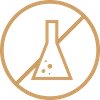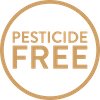Wheatgrass and Barley Grass
Wheatgrass and barley grass are among nature's most powerful superfoods and refer to the young, green shoots of cereal plants that belong to the sweet grass family. The green shoots, which later form the typical cereal stalks, already contain the full range of valuable nutrients that the cereal needs to grow. This gives cereal grasses such as wheatgrass and barley grass a special status among natural foods as absolute superfoods. The use of sweet grasses dates back thousands of years.
Algae
Algae are among the oldest life forms in the world. The term algae is a generic term for various eukaryotic organisms that thrive under water and naturally carry out photosynthesis. They are found in both fresh and salt water and are found almost everywhere in the world. In many cultures, they are an integral part of the kitchen and are highly valued for their taste and valuable properties. Well-known representatives of this extraordinary species are nori, spirulina, ecklonia and especially chlorella.
Chlorella
The freshwater microalga chlorella is one of the oldest life forms on earth. The eukaryotic, unicellular, spherical microalga, which is only 5–10µm in size, is characterised above all by its exceptionally high chlorophyll content and its particularly strong cell walls with hemicellulose, which gives its cells stability. Chlorella is exceptional for its enormous rate of reproduction, with cell division occurring every 16–20 hours. This is due to the so-called "chlorella growth factor" (CGF) contained in its cell nucleus, which is unique in this form. It is a special complex of nucleic acids, nutrients, amino acids, peptides and polysaccharides that is responsible for the high resilience and rapid reproduction rate of the microalga. The special phytochemical profile makes chlorella algae a valuable superfood.
Spirulina
Spirulina platensis (Latin Arthrospira platensis) is a cyanobacterium, formerly also known as blue-green algae. It originally comes from Central and East Africa and is now widespread in Central America and Africa. In the cuisine of its countries of origin, the blue-green algae is highly valued and has been used for hundreds of years. It is known for its extraordinary density of phytochemicals and also serves as a primary food source for flamingos. Depending on the environment and water quality, the algae develops different phenotypes and densities of nutrients. Spirulina platensis prefers alkaline and salty waters for its growth. Under optimal conditions, it multiplies rapidly. Today, it is cultivated not only in salty seas such as the Pacific, but also in artificially created water farms and in fresh water.
AFA
AFA is a unicellular, blue-green microalga (Aphanizomenon flos-aquae, Latin for "invisible flower of the water"), which can also be considered a type of cyanobacteria ("blue-green algae"). It only grows wild in lakes and ponds, especially in the deepest and most pristine waters of Klamath Lake (USA). Because of its uniquely broad spectrum of typical nutrients, it is known as one of the richest superfood algae.
Spinach
Spinach (Spinacia oleracea) is a plant species within the amaranth family. This cultivated form probably originated in Southwest Asia and is mainly used as a leafy vegetable. As such, it is a superfood. The lush green leaves are full of nutrients. Spinach is grown worldwide as a vegetable plant and is available fresh and locally grown almost all year round.
Parsley
Parsley is also considered a local superfood. It is the most well-known herb in German cuisine. In addition to its function as a tasty addition to a wide variety of dishes, it was already considered a sacred plant in ancient times.
Alfalfa
Alfalfa – also known as lucerne, snail clover or eternal clover – is an ancient cultivated plant from the legume family. Alfalfa originated in Asia, where its use dates back to the sixth century AD. In the 18th century, Franconian monks also began cultivating alfalfa in Germany.
Kale
Kale (Brassica oleracea var. sabellica L.) is a cultivated form of cabbage (Brassica oleracea), similar to broccoli. Kale has been cultivated in Greece since the 3rd century BC and in Italy since Roman times. According to literature, it has been known in Germany since the 16th and 17th centuries. Like most cruciferous vegetables, it contains high levels of valuable phytochemicals, which give it its typical aroma and special properties.
Broccoli
Broccoli (Brassica oleracea var. italica) originated in Italy and was cultivated as early as 6,000 years ago. Broccoli played an important role in ancient times and the Middle Ages. The Romans appreciated the broccoli vegetable plant for its distinctive flower heads and unique aroma. Broccoli contains a variety of valuable, natural phytochemicals that contribute to the typically pungent or bitter taste and smell of cruciferous species. Important phytochemicals in broccoli include the glucosinolate sulforaphane. Sulforaphane is known as 1-isothiocyanato-4-methylsulfinyl-butane, which is found mainly in broccoli but also in cauliflower.
Moringa
Moringa (Moringa oleifera) is a horseradish tree native to northern India that has been used worldwide for hundreds of years. Its use is well documented in India, ancient Egypt and ancient Greece. Today, the use of moringa is widespread throughout the Middle East, Asia and Africa. Moringa is valued as a true superfood due to its unique profile of phytochemicals.




















